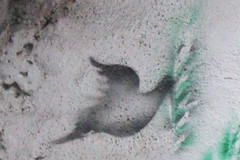Sat 31 Oct
The Western Wall, in Hebrew the Kotel, is said to be the most significant site in the world for the Jewish people. It is the last remnant of the Temple, which was the focal point of Jewish worship in ancient times.
Belief
Jews believe that the creation of the world began on Mount Moriah, now known as Temple Mount, at a point marked by the Foundation Stone. The stone was enclosed in a space known as the Holy of Holies, which became the central point of the First and Second Temples.
History
King Herod undertook the expansion and renovation of the Temple, and in the course of this work built four massive walls around the whole Temple area. The Romans later destroyed the Temple and expelled the Jews, and during the early years of the spread of Mohammedanism, the Muslims raised two mosques on the site, the golden-topped Dome of the Rock and the Al-Aqsa mosque. The Foundation Stone and the Holy of Holies are also venerated by Muslims, and are at the centre of the Dome of the Rock.
During the Six-Day War in 1967, the Israelis captured the whole of the city of Jerusalem, which they continue to administer. However they handed the Temple Mount, with its two mosques, over to a Muslim council. Non-Muslims can visit the Mount but are not allowed to enter the mosques, and the Israeli Rabbinate forbids Jews to enter the Temple Mount area at all.
The Wall today
Jews particularly venerate the Western Wall, as it is the closest point they can get to the Holy of Holies and the Foundation Stone. Men and women pray separately, as in a synagogue, with the women allocated a small area to the right of the men's space. Men must cover their heads, and a stall at the entrance hands out paper kippas to anyone who does not have their own.
The men pray individually or in groups; some of the Orthodox sects gather for prayer meetings at particular times, and seem to gravitate to wherever there appears to be sufficient space. People bring their holy books, and there are chairs, tables and a few bookstands available for anyone to use. Many go up to the Wall, press up against it, and speak or pray to it. All around there is the constant murmuring rise and fall of Jewish prayer, as each man recites the prayer in his own way, with his own emphases and at his own speed.
Some leave messages to the Almighty on folded pieces of paper in the gaps between the stones of the Wall. The bits of paper - called tzetel - are gathered up every now and then, but I don't know what happens to them then. You can even send a tzetel online :-)
The men pray individually or in groups; some of the Orthodox sects gather for prayer meetings at particular times, and seem to gravitate to wherever there appears to be sufficient space. People bring their holy books, and there are chairs, tables and a few bookstands available for anyone to use. Many go up to the Wall, press up against it, and speak or pray to it. All around there is the constant murmuring rise and fall of Jewish prayer, as each man recites the prayer in his own way, with his own emphases and at his own speed.
Some leave messages to the Almighty on folded pieces of paper in the gaps between the stones of the Wall. The bits of paper - called tzetel - are gathered up every now and then, but I don't know what happens to them then. You can even send a tzetel online :-)
A personal note
Although some family members of my own generation have visited Jerusalem and been to the Wall, I was very conscious that very few if any of my ancestors would have been able to. My grandparents on both sides came to the UK from Eastern Europe over 100 years ago; their families had probably been in Russia and Poland for several centuries, and before that had undertaken who knows how many generations of migration, from who knows where to who knows where. Every year during the Pesach celebrations they have expressed the wish to meet "next year in Jerusalem". So I touched the Wall for them.

No comments:
Post a Comment